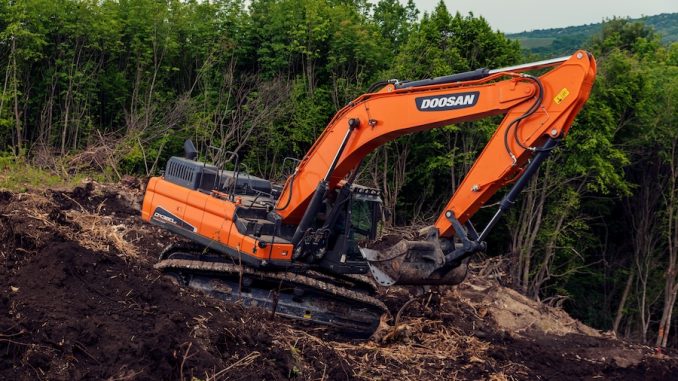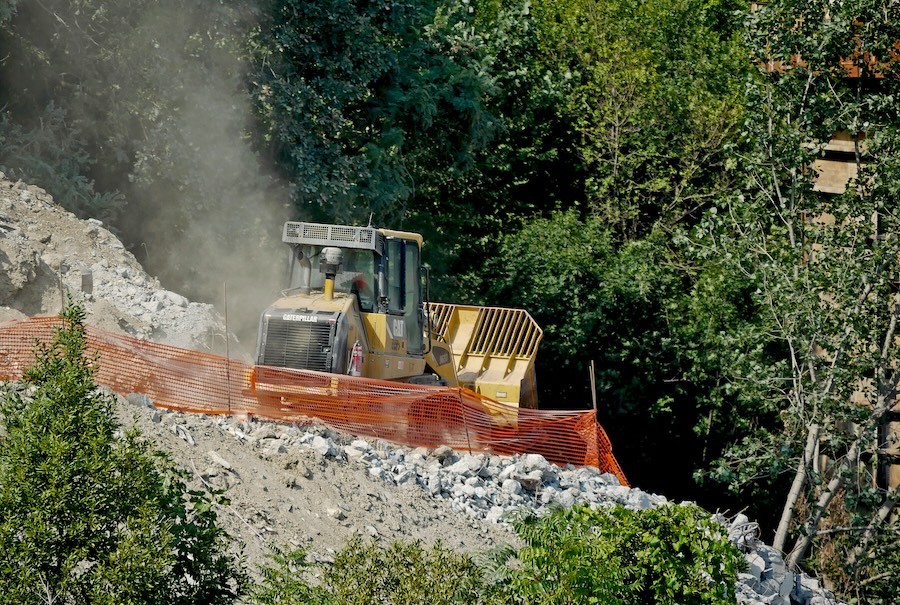
View the complete article here.
Earthmoving on sloped terrain presents a unique set of challenges for contractors. Steep inclines complicate access, stability, and safety—requiring specialized approaches to prevent soil erosion, equipment slippage, and hazardous conditions like landslides. Whether it’s for construction, landscaping, or roadwork—efficient earthmoving on slopes is critical to ensure project success and safety.
Understanding the Terrain
Before starting any earthmoving project on sloped ground, a thorough analysis of the terrain is essential. Different slopes and soil types require varying approaches to ensure stability and efficient movement of materials.
Analyzing Soil Composition and Stability
Different soil types—such as clay, sand, or rock—behave differently on slopes. For example, sandy soils can be prone to erosion—while clay may become slick and dangerous when wet. Understanding the soil’s composition will help contractors determine how much load the terrain can support and what techniques will work best.
Slope Gradient Evaluation
Accurately measuring the slope gradient is crucial in determining the equipment and methods that should be used. For gentler slopes, more conventional methods may suffice—but for steeper inclines, specialized approaches are necessary to ensure safety and prevent sil movement.
Potential Hazards
Slopes are inherently unstable—with risks of landslides, soil creep, and erosion being ever-present. Proper planning can help reduce these risks, but understanding the potential hazards before excavation begins is key to preventing accidents.
Equipment Selection for Sloped Terrain
Using the right equipment is critical when moving earth on steep terrain. Certain machinery performs better on slopes due to enhanced stability and traction.
Choosing the Right Machinery
Some machines are better suited to handle the demands of sloped terrain. Bulldozers, especially those with angled blades, can efficiently cut and push material on steep grades. Hydraulic excavators with extended reach provide the control necessary to excavate at various elevations. Compactors are useful for improving stability on loose soils, helping to mitigate landslides or soil movement.
Tracked vs. Wheeled Equipment
Tracked machines are often the better choice for working on slopes due to their enhanced traction and ability to distribute weight more evenly across the surface. Wheeled machines may struggle to maintain stability on inclines, increasing the risk of slippage.
Specialized Attachments
Adding the right attachments can significantly improve the efficiency of earthmoving on sloped terrain. Slope mowers can clear steep areas, rippers can break up hard ground, and tilting buckets provide more precision in moving material—especially on uneven surfaces.

Efficient Earthmoving Techniques
Once the terrain and equipment are properly assessed, implementing the right techniques is the next step toward completing a successful project.
Cut and Fill Method
The “cut and fill” method is one of the most common earthmoving techniques used on slopes. It involves cutting material from the higher sections of the slope and filling the lower sections to create a level platform. This technique stabilizes the area and reduces the amount of earth that needs to be moved off-site.
Bench Excavation
Bench excavation creates a series of stepped platforms, or “benches,” to prevent soil slides and provide safer working conditions on steep slopes. This method helps control the movement of soil and provides stability for heavy equipment during excavation.
Terracing for Erosion Control
Terracing involves creating a series of horizontal steps across the slope, reducing the risk of erosion during excavation. This technique not only stabilizes the slope but also allows for better control of water runoff, which can otherwise cause significant erosion.
Top-Down Approach
Excavating from the top of the slope downward is an effective way to maintain stability. This method ensures that the excavated material can be managed in a controlled way and prevents the lower portion of the slope from being destabilized during the process.
Best Practices for Earthmoving on Sloped Terrain
In addition to using the right techniques, implementing best practices can further ensure efficiency and safety when working on sloped ground.
Managing Soil Erosion
Erosion control measures are crucial to maintaining the integrity of the slope during and after excavation. Methods such as silt fences, sediment traps, and temporary coverings (like tarps or erosion control mats) can help contain the soil and prevent run-off.
Slope Drainage Solutions
Proper drainage must be in place to manage water flow on sloped terrain. Without adequate drainage, water can pool and destabilize the soil—leading to erosion or even landslides. Installing drainage systems such as culverts, ditches, or French drains can help keep the soil firm and intact.
Regular Maintenance of Equipment
Operating on slopes puts additional strain on equipment. Regular inspections and maintenance are essential to prevent breakdowns, especially on steep or uneven ground. Tires, tracks, and hydraulic systems should be checked frequently to ensure they’re in good working condition.
 Safety Considerations
Safety Considerations
Earthmoving on sloped terrain requires additional safety measures to protect both operators and equipment.
Operator Safety and Training
Operators should receive specialized training to handle the challenges of sloped terrain. They need to understand how to maneuver equipment safely, especially under less stable conditions, and how to react to potential hazards such as landslides or machine slippage.
Use of Stabilizing Accessories
Accessories such as outriggers, stabilizers, and counterweights are crucial when working on slopes. These tools help distribute the load more evenly, improving the stability of the machinery and minimizing the risk of accidents.
Emergency Procedures for Sloped Projects
In case of emergencies, such as a landslide or equipment failure, having a clear safety plan in place is critical. Emergency procedures should include evacuating operators from machinery and stabilizing the site to prevent further hazards.
Conclusion
Earthmoving on sloped terrain is challenging but can be done safely and efficiently with the right planning, equipment, and techniques. By analyzing the terrain, selecting the appropriate machinery, and applying proven methods like the cut and fill technique—contractors can manage the complexities of sloped earthmoving projects effectively.
View the complete article here.
What equipment is best for earthmoving on sloped terrain?
Tracked equipment, such as bulldozers and hydraulic excavators, offers better stability and traction on slopes than wheeled machines.
How can contractors prevent soil erosion during earthmoving on slopes?
Contractors can use erosion control methods like silt fences, sediment traps, and temporary coverings to manage soil stability.














































